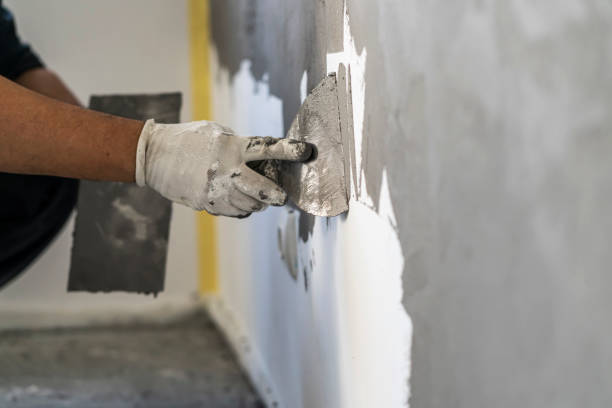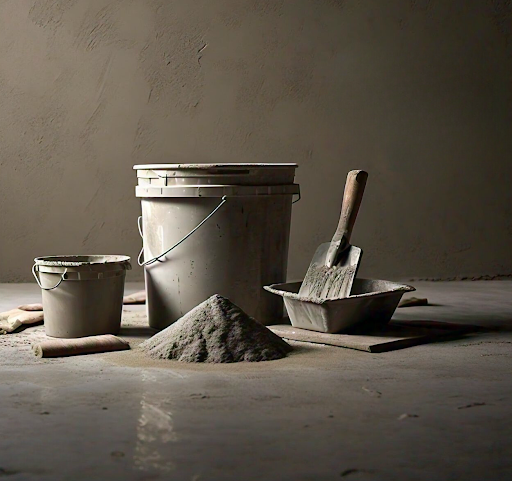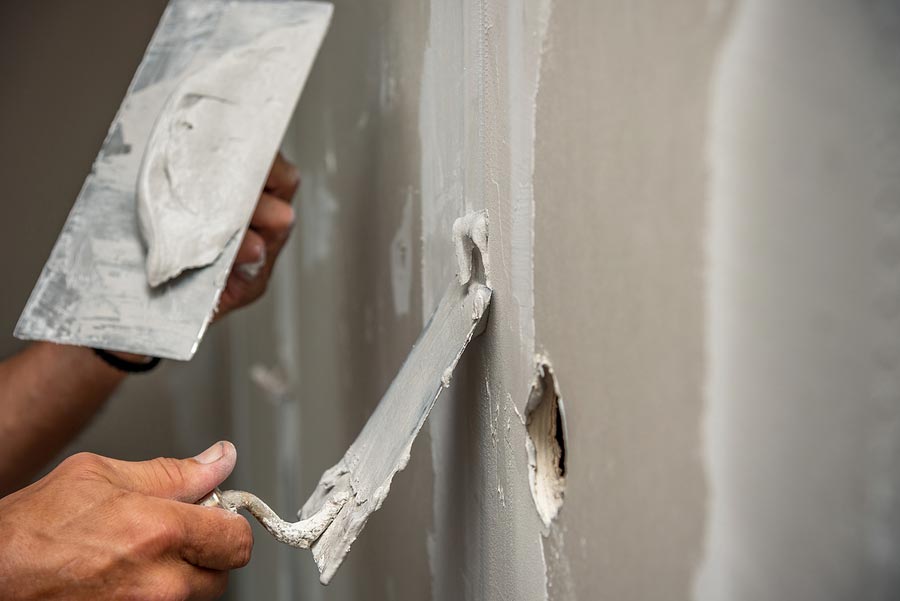How to Calculate Plastering Quantity & Save Money
Probably, after deciding to give your home that fresh look by plastering the walls, you’re thinking, “How much plaster do I actually need?” Calculating the right amount of plaster helps in avoiding potential waste, saving money, and assuring a smooth, uninterrupted renovation process. Just like paint, getting the plaster quantity right means no unnecessary delays or expenses.
In this blog, we will walk through the whole process of how to calculate plastering quantity, step by step. And if that sounds a little too much for you, don’t worry—Clean Fanatics is always here to handle the job expertly for you!
How to calculate plastering quantity?
To calculate plastering quantity, measure the surface area (height × width) of all walls and ceilings, subtract areas of doors and windows, and factor in wall condition and plaster thickness.
Key Takeaways:
- Accurate plaster calculation prevents waste, ensures project continuity, and improves cost efficiency.
- Basic formula: Surface Area = Wall Height × Wall Width
- Room size, surface condition, and ceiling height impact plaster quantity.
- Professional services offer expertise, accurate calculations, and high-quality results.
Why Knowing How to Calculate Plastering Quantity is Important?
Accurately calculating plaster quantity is crucial for several reasons:
- Avoiding Wastage: If you can foresee the actual quantity of plaster required, there is no overbuying, and it saves not only money but also minimizes waste. Overestimation may mean that some plaster remains unused, and it may be wasted since the material goes dry or becomes useless if not stored appropriately.
- Ensuring Project Continuity: Running out of plaster halfway through a project invites unnecessary delays and upsets your entire workflow. Knowing the exact quantity guarantees you adequate material to finish the job, thus keeping your renovation on schedule.
- Cost Efficiency: Plastering incorporates both material and labor costs. By calculating the amount of plaster required, you will be able to make proper finances for the same and avoid spending extra money in making last-minute purchases or over any other contingencies.
- Planning and Preparation: Thereby it helps in understanding how much the plaster is required to prepare and mix in suitable batches for application in order that the plaster will not dry out before being laid. In short, proper calculation of plaster quantity saves renovation time, cuts costs, and results in high-quality finishes within your project.
In summary, accurately calculating plaster quantity is essential for maintaining efficiency, reducing costs, and achieving a high-quality finish in your renovation project.

Basic Formula for Calculating Plaster Quantity
Calculating the right amount of plaster is crucial for ensuring you have enough material without wasting resources.
Here’s a step-by-step guide to help you accurately estimate the plaster quantity required for your project.
Measure the Surface Area
1. Measure Wall Height and Width: Measure the height and width of each wall or surface area you intend to plaster. Multiply these two values to get the surface area in square feet.
- 10 ft × 12 ft = 120 square feet
Example: If a wall is 10 feet high and 12 feet wide, the surface area will be:
2. Total Surface Area: If you have multiple walls or surfaces, add up the surface area of each to get the total area that needs plastering.
W*L+(W*H)*2+(L*h)*2
W-Width
L-Length
H-Height
Mix the plaster material according to specifications, normally for wall 1:6 and for ceiling 1:4 cement and sand ratio.

But don’t worry if all these sound confusing! Clean Fanatics, being the best replastering service in Bangalore, will take care of everything, starting from wall inspection for detailed study down to calculating the amount of plaster to be required.
We’ll save you from that headache of getting the right volume of cement, and quantity of material, and get your walls replastered with perfection, giving your home a flawless and long-lasting finish.
How Room Size Impacts Plaster Quantity
How Room Size Affects the Quantity of Plaster Logical enough, the amount of plaster required in a renovation is directly related to the size of a room. Understand this relationship to make sure you have enough material for the work without waste.
1. Wall Surface Area Matters
- Larger Rooms: Bigger rooms have more wall surface area, which naturally means more plaster is needed. Each wall’s height and width contribute to the total amount of plaster required.
- Smaller Rooms: Smaller rooms automatically mean less total wall surface area. The quantity of plaster, therefore, becomes less. While calculating the amount of plaster needed for smaller rooms can be easier, precision is vital to avoid wastage.
2. Impact of Odd-Shaped Rooms and Features
- Corners and Nooks: The more odd-shaped a room is—or contains many corners, alcoves, or any other complicated design, the more plaster is required because of these increasing surface areas.
- Doors and Windows: Big windows and doors decrease the amount of plaster consumed because they cover a space on the wall. Their surface area is always subtracted while calculating the total amount of needed plaster.
3. Ceiling Heights Influence Plaster Quantity
- High Ceilings: Due to the large vertical surface area, more plaster will be required in rooms that have high ceilings.
- Standard or Low Ceilings: These require less plaster and make the calculation simpler.
Understanding the Role of Surface Condition

The type and condition of your wall play a huge role in determining how much plaster you’ll need:
- Rough Walls: Rough or textured surfaces require more plaster to achieve a smooth finish. You’ll need extra material to fill in gaps and uneven spots.
- Smooth Walls: Smooth surfaces need less plaster, making the job easier and more cost-effective.
If your house requires any home renovation work, we’re here to manage it efficiently, ensuring that plastering is completed to perfection before moving on to painting. We’ll take care of the quantity of cement, the ratio of cement, the thickness of the plaster, dry volume, and other things like the quantity of sand per sqm for you.
A proper paint finish is only achievable after thorough plastering, so for top-quality painting services, don’t hesitate to reach out for the best results.
Factors Affecting Plaster Quantity
- Wall Condition: Cracked, uneven, or damaged walls will involve more plaster. Professionals fill all the cracks and make proper preparations on the surface before plastering so that you have an even finish.
- Ceilings: Don’t forget that ceilings also form part of your calculations. Ceilings also require sometimes just as much plaster as the walls, so make sure you measure those too.
- Doors and Windows: Herein, the area consumed by the doors and windows are subtracted in the making of the quantity of plaster, and extra is always in stock to allow for errors or redoing certain areas.
Common Mistakes to Avoid When Calculating Plaster Quantity
- Skipping Measurements: Always measure each wall accurately. Guesswork can lead to overspending or shortages.
- Ignoring Surface Condition: Not accounting for rough or uneven surfaces can lead to underestimating the amount of plaster required.
- Forgetting to Include Ceilings: Ceilings are often forgotten in the volume of plaster, leading to delays.
Why Relying on Professionals is the Smarter Choice
Choosing professional services for your home renovation, painting, or plastering projects is a smarter choice for several reasons. Here’s why:
- Expertise and Skill: Professionals bring years of experience and specialized knowledge to the table, ensuring the job is done correctly the first time. They understand the nuances of different materials, techniques, and application processes, which is crucial for achieving a high-quality finish.
- Accurate Material Calculation: When it comes to tasks like calculating plaster quantity or paint requirements, professionals know how to calculate plastering quantity precisely, taking into account factors like wall texture, room size, and ceiling height. This accuracy prevents overbuying or running out of materials, ultimately saving you time and money.
- High-Quality Finish: Professional services ensure a flawless and durable finish. Whether it’s the high-quality thickness of plastering, painting, or any other civil work, experts use the right tools, techniques, and quality materials to provide a result that not only looks great but also lasts longer.
- Safety and Compliance: Professionals are trained to handle potentially hazardous tasks, such as working on high ceilings, and electrical outlets, or dealing with chemicals in paints and grouts. They follow safety protocols and building regulations, ensuring the job is done safely and up to code.
- Cost-Effective in the Long Run: While it might seem cheaper to do the work yourself, mistakes can be costly to fix. Professionals avoid common errors, use materials efficiently, and deliver a finish that lasts, making their services more cost-effective in the long run.
By relying on professionals, you can be confident that your project will be handled with expertise, precision, and care. We’ll select the right cement bag and calculate the quantity of cement required.
This not only saves you from potential headaches but also ensures that your home looks its absolute best.

Frequently Asked Questions:
1. How much plaster do I need for a 100-square-foot wall?
You will typically need around 5-6 bags of plaster for a 100-square-foot, but this can vary depending on the wall condition.
2. Can I plaster over painted walls?
Yes, but the surface should be roughened and primed to ensure proper adhesion.
3. Should I include ceilings when calculating plaster quantity?
Yes, always include ceilings to ensure you have enough plaster for a complete job.
4. Is there a difference between wall plastering and ceiling plastering in terms of quantity?
Usually, there isn’t much difference. However, ceilings may require a bit more plaster due to the challenging application process.
Conclusion:
Calculating plaster quantity is an essential step in any home renovation project, and getting it right ensures a smooth, hassle-free experience. The room size, surface condition, and type of plaster all play a role in determining how much you’ll need. By choosing professional services like Clean Fanatics, you can relax knowing that our professionals will handle everything, from precise calculations to the perfect application, saving you both time and money in the long run.
Don’t let plastering calculations overwhelm you— Contact us today to get started on transforming your home with expert plastering services.
